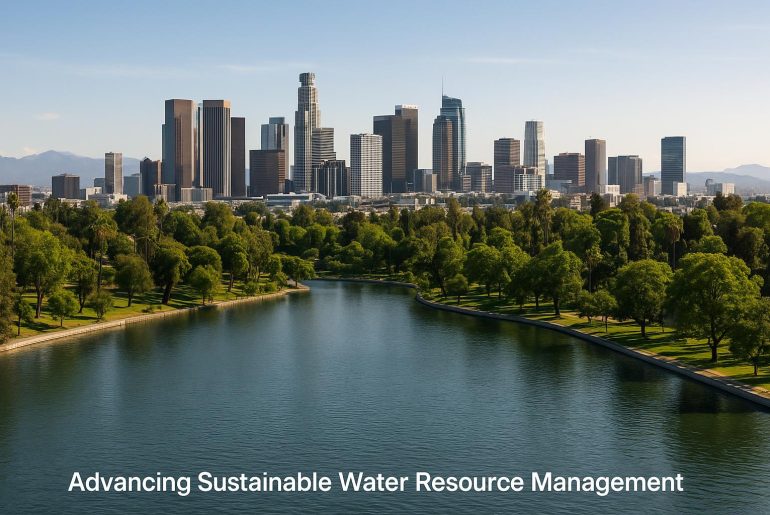Based in Los Angeles, California, Alex Rojas has built a career at the intersection of education, leadership, and water resource management. Known also as Alejandro Rojas, he currently serves as the chief operating and executive officer of the Central Basin Municipal Water District in Commerce, where he leads initiatives that emphasize sustainability and efficiency.
Before joining the district, Alex Rojas Los Angeles CA guided the Bassett Unified School District in La Puente, where he improved financial performance and infrastructure. Through his work with Greenvale Consulting Services and his background in water engineering and organizational leadership, Rojas contributes to the broader dialogue on balancing sustainability and growth in water management. His academic foundation from the University of Colorado, Boulder, and the University of Southern California supports his data-driven, systems-based approach to public agency operations.
Balancing Sustainability and Growth in Water Resource Management
In regions experiencing rapid urban expansion, the tension between sustainability and development has never been more pronounced. Communities depend on a reliable water supply to support housing, industry, and agriculture, yet unchecked growth can strain resources beyond their natural capacity. Balancing these competing priorities demands a nuanced strategy that is grounded in data, innovation, and long-term thinking rather than short-term fixes.
Urbanization exerts tremendous pressure on water systems. As cities grow, demand increases not only for drinking water but also for irrigation, manufacturing, and energy production. At the same time, climate variability is altering rainfall patterns and reducing the reliability of surface and groundwater sources. A recent analysis by the United States Geological Survey found that groundwater depletion has accelerated in several metropolitan regions over the past two decades, reflecting an imbalance between extraction and natural recharge rates.
This imbalance is both an environmental and an economic problem. When aquifers decline, costs rise for pumping, treatment, and infrastructure, creating ripple effects throughout communities. Reconciling growth with sustainability requires treating water as a finite asset. One strategy gaining momentum is integrated water resource management, an approach that coordinates land use, infrastructure investment, and environmental protection in a single planning framework.
Instead of expanding supply alone, cities are rethinking demand. Conservation programs that incentivize efficient appliances, tiered pricing models that reflect scarcity, and advanced leak detection technologies are helping reduce unnecessary consumption. These are not abstract concepts; they are measurable interventions. For example, cities that have implemented tiered pricing structures often report reductions in per capita use of 10 to 15 percent within the first few years.
Technology is also reshaping how water agencies plan for growth. Predictive analytics powered by AI can model consumption trends decades into the future, allowing decision-makers to align capital investments with realistic projections. Smart metering and sensor networks provide real-time data on system performance, enabling faster response to leaks and optimizing operational efficiency. These innovations make it possible to serve more people without proportionally increasing withdrawals from stressed watersheds.
Environmental stewardship remains essential in this equation. Protecting and restoring natural infrastructure such as wetlands, rivers, and recharge basins can strengthen resilience against both droughts and floods. These ecosystems act as natural buffers, storing water during wet periods and releasing it slowly during dry spells. A study by the World Bank estimated that investments in watershed protection can reduce water treatment costs by up to 50 percent over time. Rather than competing with urban growth, healthy ecosystems make it more sustainable.
Governance is equally important. Sustainable water management depends on aligning policies across jurisdictions, sectors, and communities. Local agencies, regional authorities, and state regulators must coordinate to avoid fragmented decision-making. Transparent communication with the public is crucial as well, because achieving sustainability often requires cultural shifts in how communities value and use water.
Ultimately, the challenge is not growth itself but the way it is managed. When cities integrate forward-looking water strategies into their development plans, they can expand without undermining the ecosystems they rely on. The future of water security depends on this balance: embracing innovation and growth while protecting the natural systems that make life possible. More than a technical task, water resource management is a collective responsibility that will define the resilience of communities for generations to come.
About Alex Rojas Los Angeles CA
Alex Rojas, also known as Alejandro Rojas, is a Los Angeles–based executive and consultant specializing in organizational leadership and water resource management. He serves as chief operating and executive officer of the Central Basin Municipal Water District in Commerce, where he has led significant growth and operational improvements.
A former superintendent of the Bassett Unified School District, Rojas also works as a principal consultant at Greenvale Consulting Services in Los Angeles. He holds a doctorate in organizational leadership and a master’s degree in water engineering and management.

